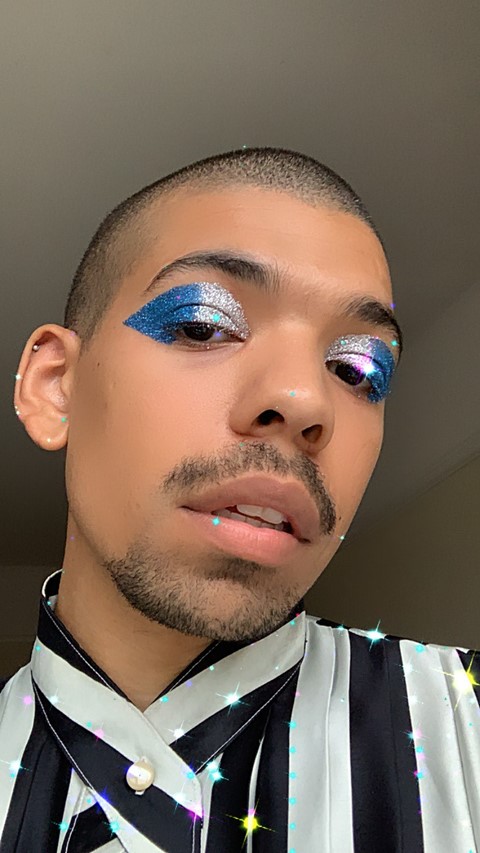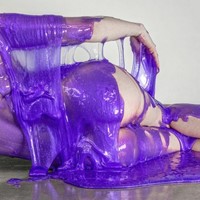On International Non-Binary People’s Day, three creatives reflect on their journey to accepting their gender identity, the hard questions it forced them to ask, and how things can be improved for the next generation
Back in 2011, I dramatically came out as gay to my family – an embarrassing story I like retelling when I’m drunk, which involves the police and fainting in a closet. But it’s not the story that’s important right now.
To have everything out in the open and to have my family accept me, after years of hurt and turmoil from harbouring the secret was the biggest relief. For years after, I lived (relatively) happy. I never expected to find myself feeling trapped and confused again in a very familiar way, but that’s exactly how it has felt coming to terms with being non-binary.
It feels good to be able to see that in black-and-white: I am non-binary. It’s something I’ve been intensely reflecting on for over a year – maybe even longer subconsciously – and this year, on International Non-Binary People’s Day, feels like a good time to be open about it. That’s for both myself, and other non-binary people out there, who might need to hear this.
I’ve never been particularly masculine; I don’t walk, I strut, I gasp, and shriek – all traits I attributed to being a cis gay male (and could be), but the line I toed between masculine and feminine meandered back and forth – driven by muscular bodies I saw celebrated on Instagram, the porn I watched, the men I hooked up with. While I don’t exactly remember the first time I came across the term non-binary, there was a lot of empty Googling, and frustration at the lack of resources online. An article on Teen Vogue shed some light, but I wanted to know more and understand how it connected to how I felt.
Confused and unsure, I started to shrink myself in public, around strangers, and extended family, embarrassed of the way I sounded and flounced, trying desperately not to draw attention to myself. On a deeper level, for years, whenever people called me a man, my gut instinct would be to protest that I wasn’t, without even really understanding why. The label of “man” was one that I assumed applied to me, but my skin prickled when it was used – it didn’t feel comfortable in a way I couldn’t articulate or acknowledge yet myself. I sought out non-binary peers to explore those knotted emotions and experiences.
“For me, being non-binary means experiencing maximum comfort and confidence in my body,” Maxwell, an artist and model living between New York and LA, tells me. They first started exploring being non-binary in high school. “My internal security translates to external expression, which often doesn’t adhere to gender roles. Even though I consider it nothing more than a label, it's a label that helps erase my dysphoria.”
“The label of ‘man’ was one that I assumed applied to me, but my skin prickled when it was used – it didn’t feel comfortable in a way I couldn’t articulate or acknowledge yet myself”
For London-based writer, creator, and model Radam Ridwan, coming to terms with being non-binary was a process that involved reflecting over their life so far. “There are so many unlearnings,” they say. “You don’t really get the time to do it, but you have to. With gender identity, I think about the way it’s been forced upon me and how I want to be viewed by the world. It took a long time to settle into it and learn the ins and out, but it was something that just hit me and it was quite hard to go back and reassess.”
But the more I reflected on my own feelings, the more confused I felt. I had so many questions: Was I trans? Did I want to use they/them pronouns? Was just feeling non-binary enough? How do I tell people? Was it just a phase? I was scared to put these to my friends and family – who for the record, have been nothing but supportive. But how could they possibly understand or support me, when I asked these questions of myself and came up with nothing? According to Stonewall UK, this isn’t uncommon, with 24 per cent of non-binary people hiding their gender identity at home.
Indya Moore, Arca, Jonathan Van Ness, Sam Smith, Lachlan Watson, Janelle Monáe, Amandla Stenberg – the list of openly non-binary celebrities can now be counted on two hands. Still, I couldn’t see how I related to any of them. It wasn’t like coming to terms with being gay, which is drenched in pop culture and starry, authentic origin stories. When you’re non-binary, the films, TV shows, and pop references aren’t as present yet. What is out there, particularly in mainstream media, is pretty negative – being non-binary is a punchline, or a faddy trend.
“There was a very large period of time where I refused to accept the existence of non-binary people, I percieved the term to be a political personality trait that ‘quirky/edgy’ people aligned themselves with,” Maxwell agrees. “Through research and listening to the voices of individuals who are non-binary, I was able to listen to my own internal dialogue and understand the physical and mental constraints I had placed on myself.”
As I began to unpick what I now recognise as dysphoria, experimenting with clothing and make-up helped me towards crafting a newly discovered identity. Make-up gave me the freedom to express myself, even if it brought with it laughs and stares when I was out in public. “Now, people will know I’m non-binary,” I remember thinking one evening, before spiralling into a hole that I was using make-up as a visual crutch, a way of proving what I felt on the inside.
The reality is, there isn’t a single aesthetic that applies to non-binary people – we’re incredibly varied in the way we present, as well as how we identify ourselves. Some use they/them pronouns, others don’t. Some identify as trans, while others don’t. “The way everyone lives is performative. Think about how performative cisgenders are, that is just the most performative shit ever. If you overthink it, it becomes like a minefield,” says Radam. “Maybe it is performative but the world is performative so I'm going to go with it and put on a show while doing it. I may as well have my performance be challenging, beautiful, complicated, messy, angry, and whatever I want it to be.”
Non-binary visibility and represenation is much more expansive than even just five years ago, yet it’s clear that there’s a long way to go to be normalised or celebrated fully. Even when looking for people to contribute to this article, a social media callout saw more people respond to ask what ‘enby’ meant – it’s a term used to describe non-binary people, rather than NB, which refers to ‘non-black’ – than non-binary people coming forward.
Allies can and should do their part to help affirm gender identities different to their own by normalising the use of different pronouns, correcting those who use them incorrectly, and asking (appropriate) questions when they’re unclear. Looking for somewhere to start? On Instagram, Radam troubleshoots frequently asked questions about being non-binary with humour and wit. Online there are more resources than ever – here, here, here – so there’s no excuse.
For non-binary people grappling with their identity or even those curious, Maxwell suggests seeking therapy with an expert on gender identity – should it be available to you. In the UK, Mermaids has supported trans and gender-diverse children since the 90s with local support groups, helplines, and online resources, but the NHS offers little to no support and the information online for both parents and children is abysmal.
At a time where the government is rolling back vital rights for trans people (which, for the record, non-binary people aren’t recognised by to begin with), and prominent voices like She Who Must Not Be Named (AKA J.K. Rowling) and her vitriol on Twitter, it’s more important now than ever to offer support and help a generation of young trans and non-binary people.
If professional support isn’t something you have access to, Maxwell encourages personal research online and offline. “Uncertainty of whether your internal emotions are valid is extremely common among trans and non-binary folx. Once you recognise your feelings are normal, everything else starts to become easier to unpack.”
“When I was younger I would fantasise about how it would feel to be comfortable with who I was. Now that I’ve reached that point, I understand how it feels to be a functioning human and can confront obstacles and moments of happiness without the baggage of dysphoria looming over me” – Maxwell, model and artist
Quite simply though, we need more education around gender identity from a younger age. As a 27-year-old, I feel like I’m finally living authentically, but I can’t help but think about the tumultuous journey that could have been avoided had I been aware of the possibilities of being non-binary at an earlier age. “When I was younger I would fantasise about how it would feel to be comfortable with who I was, some state of euphoria in which I unlocked maximum power,” says Maxwell. “Now that I’ve reached that point, I understand how it feels to be a functioning human and can confront obstacles and moments of happiness without the baggage of dysphoria looming over me.”
Musing on the future of non-binary people, Radam conludes: “The binary and rules around the binary are hurting everyone, not just non-binary people. We can evolve by legitimising non-binary identities and legitimising the idea that there’s no way of being any gender. It’s helping everyone get out of this trap that we’ve built for ourselves, which is such a binary way of seeing people of different sexes, gender, and everything in our lives. Why do we need it?”




